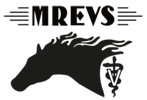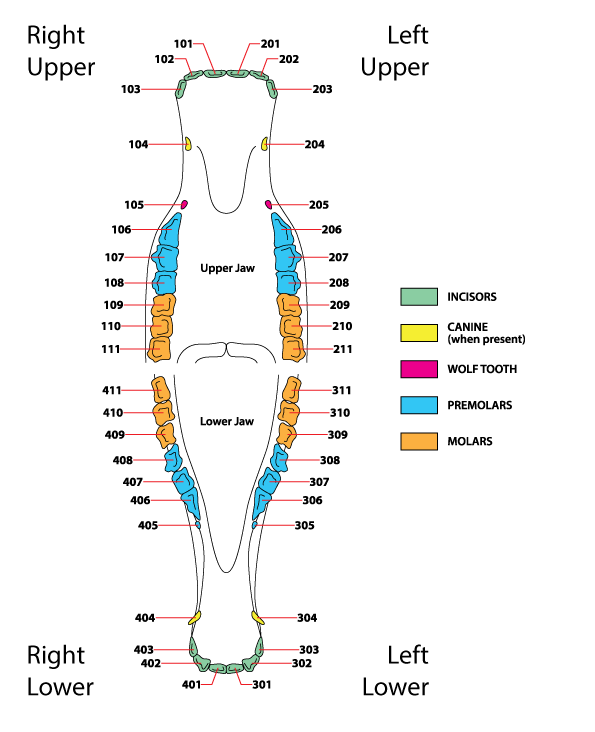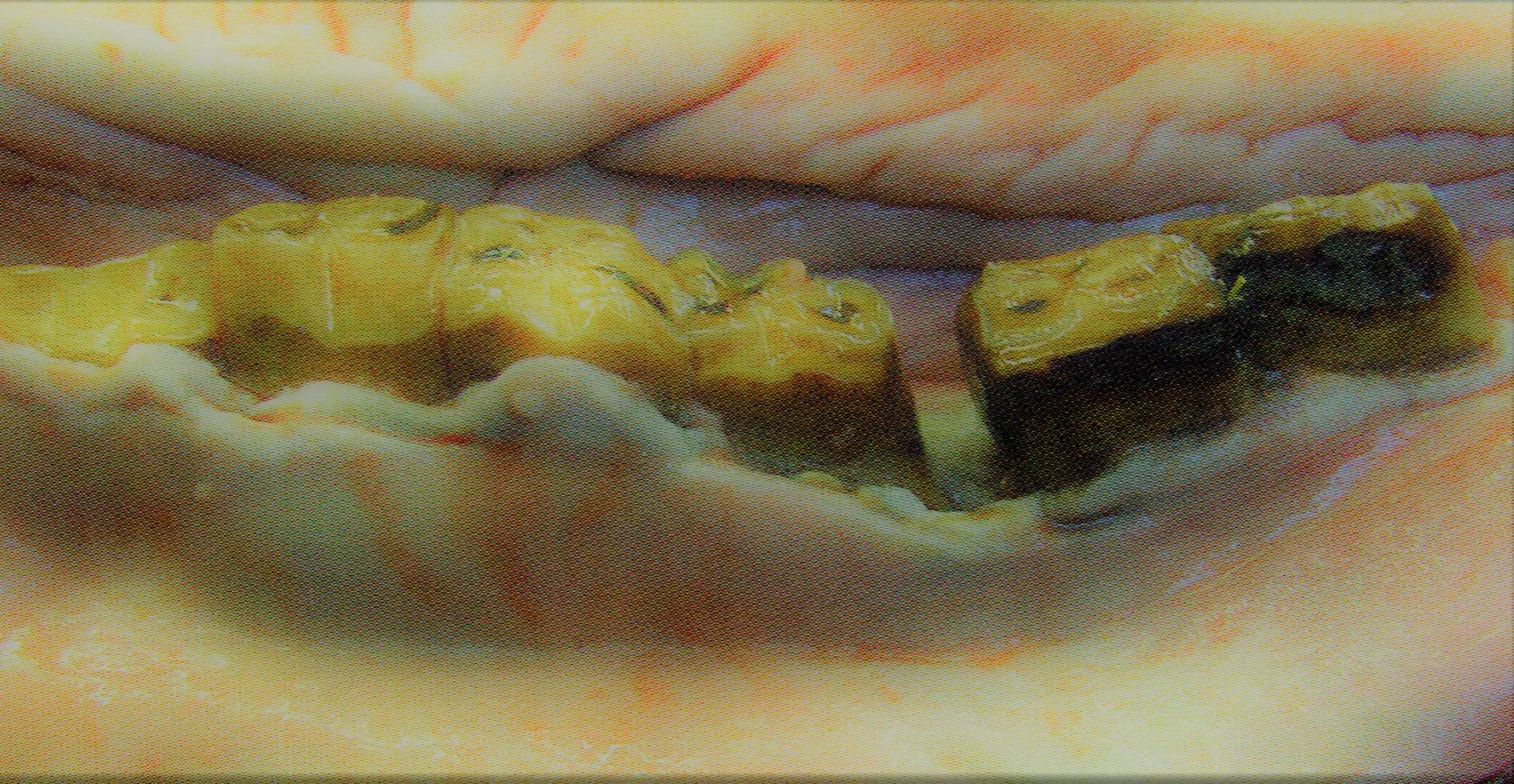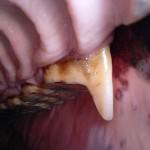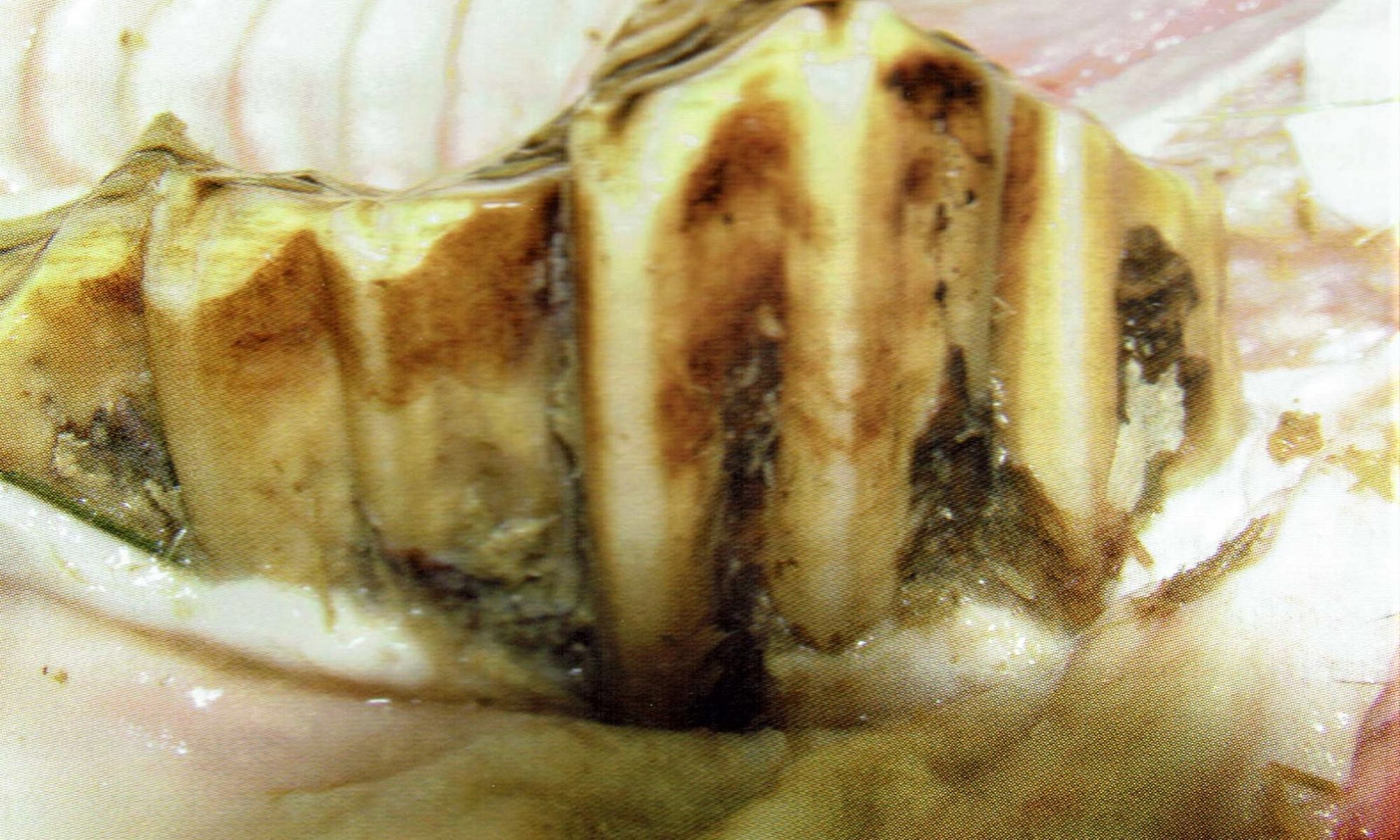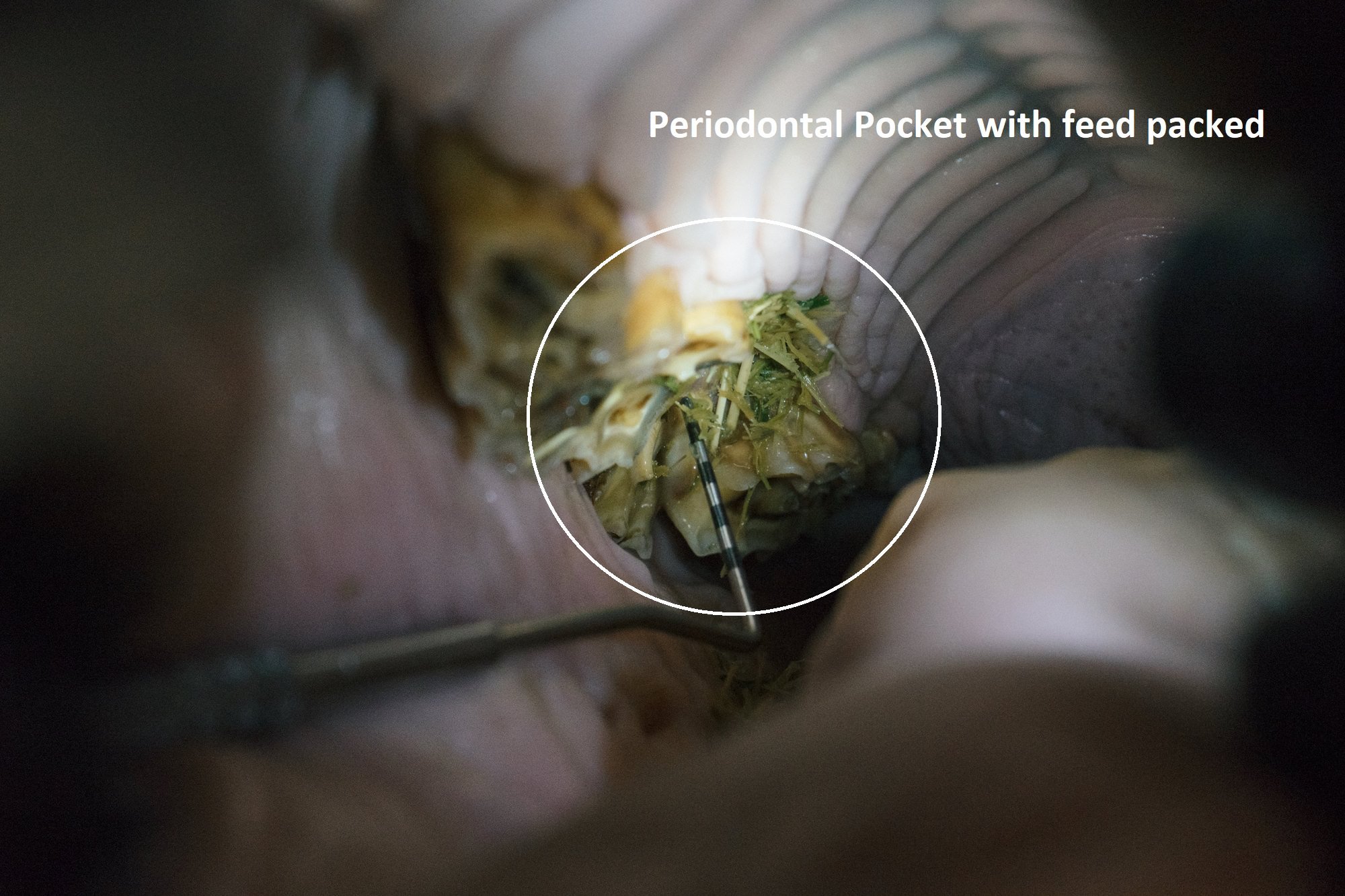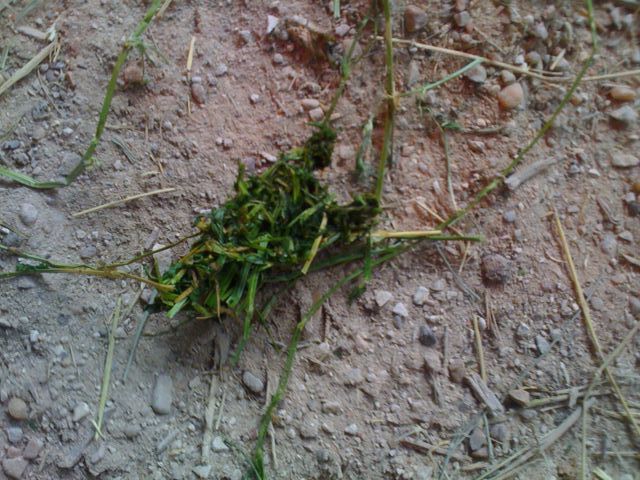LEARNING CENTER
ALL EQUIDS NEED ROUTINE DENTAL CARE
The most common phrase we hear regarding dental care is, “My horse does not need their teeth done because he/she does not have any issues.” The truth is, if your equid has not had PROPER dental maintenance in the last 1-2 years, he/she needs dental care regardless of age, sex, breed, discipline, retired, semi-retired, backyard, performance, snaffle bit, curb bit, hackamore, bosal, pony, horse, donkey, old, young – you get the point. ALL equids need routine dental care. But why?
Without routine dental care, starting from the time the adult teeth begin to erupt, common issues go unaddressed and become more pronounced and problematic, creating a very uncomfortable existence for your horse. Any activity which involves the mouth gradually becomes more difficult and strenuous on the teeth and their surrounding supporting structures, such as the mastication (chewing) muscles, periodontal ligaments, tongue and TMJ. The result can be a very grumpy horse who has difficulty eating and chewing food properly.
Dr. Johnson has made it his mission not only to provide the best dental care for your horse, but also to educate and help you understand each and every aspect of maintaining a healthy and happy horse. There is no such thing as a “silly” question, in fact, inquiries are expected, encouraged and welcomed.
Please enjoy our resources page as a source of information. If you still have questions, feel free to contact us here.
Quick Tips
Does your horse (or equid) suffer from any of the following?
- Dropping feed or grain from his mouth while eating?
- Suddenly uninterested in eating or not finishing meals?
- Losing weight for no apparent reason?
- Tossing or tilting head, fighting the bit, lolling tongue?
- Poor or decreased performance such as failing to stop or turn or pulling on the reins?
- Presenting a bad smell from the mouth or discharge from the mouth?
These are common signs of dental problems. It is important to have these issues addressed as soon as you become aware.
The anatomy of a horse’s mouth, front to back:
Horses get two sets of teeth through their life. There are 24 deciduous teeth, or baby teeth, which begin to develop before the foal is born and continue to emerge in pairs until about 8 months of age. At about 2 ½ years of age, the permanent teeth begin to erupt. During the eruption of these permanent teeth, the baby teeth, now called caps, are pushed out. This continues to happen until around age 5, at which point there will be 36 -44 permanent adult teeth in the mouth, depending on the sex of the horse. Eruption does not stop however, and teeth continue to erupt, or push out throughout life. This does not mean the tooth itself continues to grow, as some people might think. By 5 years of age, all of the teeth in the mouth are fully grown in the alveolar bone beneath the gum line. As a horse ages, this bone structure changes, causing the teeth to continuously push past the gum line.
Horses are grazing animals, and they have different shaped teeth through their mouth adapted for such purposes. All horses, male or female, have 12 incisor teeth in the front of their mouth that are used for cutting and tearing grasses and other foliage. In wild horses, they are also sharp enough to be used as a good defense against predators and enemies.
After the canine teeth and before the back teeth, there is a gap called the interdental space, or more commonly, the “bar”. This is the space where the bit sits. During eating, this is the area where foreign objects and/or undesired feed can be sifted out, possibly preventing injury to back teeth or undesirable results in the back part of the mouth. This area is considered to be a very sensitive area, and should be kept in mind when bridling or riding a horse with a bit.
After the interdental space, come the premolars and molars, with the molars being the furthest teeth in the back of the mouth. There are 12 premolars (unless wolf teeth are present), and 12 molars. These teeth have ridges and a wide surface perfect for grinding and mashing up food before it is swallowed, except in the instance of first premolars, or wolf teeth. Like the canine teeth, the wolf teeth have become obsolete as horses have evolved, although for reasons different than fighting and protection. Early ancestors of today’s equid were much smaller and ate a diet consisting of bushes and shrubs. They had 7 cheek teeth on each side of the upper and lower arcade, and these teeth had more of a resemblance to that of a human tooth. As time went on, horses grew bigger and began eating a diet which consisted more of grasses, causing the cheek teeth to evolve into more of the flat, ridged surface we know them to be today. For whatever reason, the first premolar, or wolf tooth, did not evolve, and has, in many cases, disappeared from the mouth completely. In the few instances when wolf teeth are present, it is most likely in the upper jaw, and may be in only one side or the other, or both. Sex of the horse is not usually a factor, as in the case of canine teeth. Wolf teeth are very small, and some do not ever come through the gum line. In most cases, they are not problematic and do not need any attention, however in some cases, they can interfere with the bit, and need to be extracted. This is something Dr. Johnson can determine upon examination.
Anatomy Chart
Here is a chart that outlines approximate age when tooth eruption begins. You may use this chart to make sure your young horse is on track for a healthy mouth.
Common Equine Dental Issues
Let’s discuss some of the common issues you will see in a horse’s mouth. Keep in mind, even a horse who is properly maintained can, and usually will, present with these issues, although usually very mild and easily corrected. This means that on the opposite end of the spectrum, these issues can be extremely severe in horses who have not been maintained or have received improper dental care. As we know, teeth do not erupt at the same time, or at the same pace throughout a horse’s life. This means that routine dental exams and maintenance should begin early and be done often in order to maintain the integrity of your horse’s mouth. How early? We know that the molars begin to erupt around 1 year of age. This means that the possibility for hooks, waves, ramps and steps begins at this age as each molar makes its way through the gumline and comes into wear. We can also monitor the eruption process to ensure everything is happening as it should. Being proactive helps catch issues that are easily fixed as young teeth are still viable and easily manipulated. Issues that are more difficult to treat as adult teeth become more permanent can cause discomfort for your horse, and most definitely become more costly to address further down the road. Here are some of the common issues you will see in a horse’s mouth:
- Wave – Waves occur in the molar arcades and are a result of uneven wear which create differing heights of 2 or more teeth in a row throughout the molar arcade.
- Step- This occurs when one cheek tooth is missing, or completely overpowers it’s opposing tooth due to lack of dental care or uneven eruption as a young horse. It causes the overbearing tooth to grow longer than the teeth beside it, causing a lock-and-key type reaction and causing stress on the periodontal ligaments and making chewing difficult and uncomfortable.
- Ramp – Ramps occur when the lower is set slightly forward from the upper jaw. They occur on the lower jaw, and affect the first and last arcade tooth on the lower jaw.
- Hook – Hooks are essentially the same thing as ramps, except they affect the upper jaw.
- Periodontal pocket – A widening of the periodontal space caused usually as a result of malocclusion. Periodontal pockets cause the most discomfort of any issue because of the pressure created on the periodontal ligament, as well as the probability of feed becoming packed in the space.
- Quidding – Quidding is the dropping of partially chewed wads or balls of feed from the mouth. This is usually an indication of a dental issue that needs to be addressed.
STEP
This occurs when one cheek tooth is missing, or completely overpowers it’s opposing tooth due to lack of dental care or uneven eruption as a young horse. It causes the overbearing tooth to grow longer than the teeth beside it, causing a lock-and-key type reaction and causing stress on the periodontal ligaments and making chewing difficult and uncomfortable.
Dental terminology explained
- Maxilla – Upper jaw.
- Mandible – Lower jaw. In equids, the maxilla is wider than the mandible.
- Upper/Lower Arcade – “Arcade” refers to the arch shape made by the rows of teeth, on either the upper (maxilla) or lower jaw (mandible). Made up of the premolar and molar teeth.
- Occlusion – The contact between the upper and lower teeth (arcades). The occlusal surface refers to the parts of the teeth, top and bottom, that come in contact with each other; the “bite”.
- Malocclusion – Malocclusion occurs when there is malalignment or incorrect relation between the upper and lower arcades. It can be a congenital condition, caused by trauma or injury or improper wear and lack of proper dental care. Most malocclusion can be repaired or adjusted so as not to cause any issues with eating, bridling, performance, dental disease, infections, chronic oral pain, head shaking, TMJ pain/malalignment,
- Ventral/Dorsal – Ventral = bottom, dorsal = top
- Rostral (Mesial) – Front of tooth
- Caudal (Distal) – Back of tooth
- Float – To level enamel points
- Occlusal Adjustment – the scientific adjusting, usually by grinding, which reshapes the occluding surfaces of the teeth to develop and/or improve upon the relationship between each tooth and its supporting structures, including the muscles used for chewing, and the TMJ (tempromandibular joint).
- Bit Seat – Controversial procedure in which the second premolars are rolled or reshaped at an angle, sometimes more than 45°, thought to decrease irritation to the teeth and/or soft tissue caused by the bit. There are many different arguments as to the necessity and usefulness of a bit seat. When looking at the actual procedure involved in creating a bit seat, one can plainly see that it involves reshaping or cutting the tooth in a manner that compromises the structure of the entire tooth. PERMANENT damage to the structures of the tooth are eminent with this procedure, and lifelong irritation and sensitivity are a guarantee. In some severe cases, there can be damage to the pulp, which causes severe pain and discomfort. Sometimes, the tooth itself will die, which can cause many issues and requires extraction. Logic tells us that it makes sense to find proper equipment to fit the mouth rather than to tailor the mouth to fit the equipment. The bit should never come in contact with the premolars when a horse is bridled, and should sit about an inch below these teeth, when properly fitted. If the bit comes in contact with the teeth, or the soft tissue is pushed or forced in such a way that it becomes irritated by the premolars, the bit/bridle does not fit properly, or the horse is being ridden and collected improperly and too severely. If you have questions regarding proper fit of any equipment for your horse, we will be glad to help you. Happy horses are the goal!!
